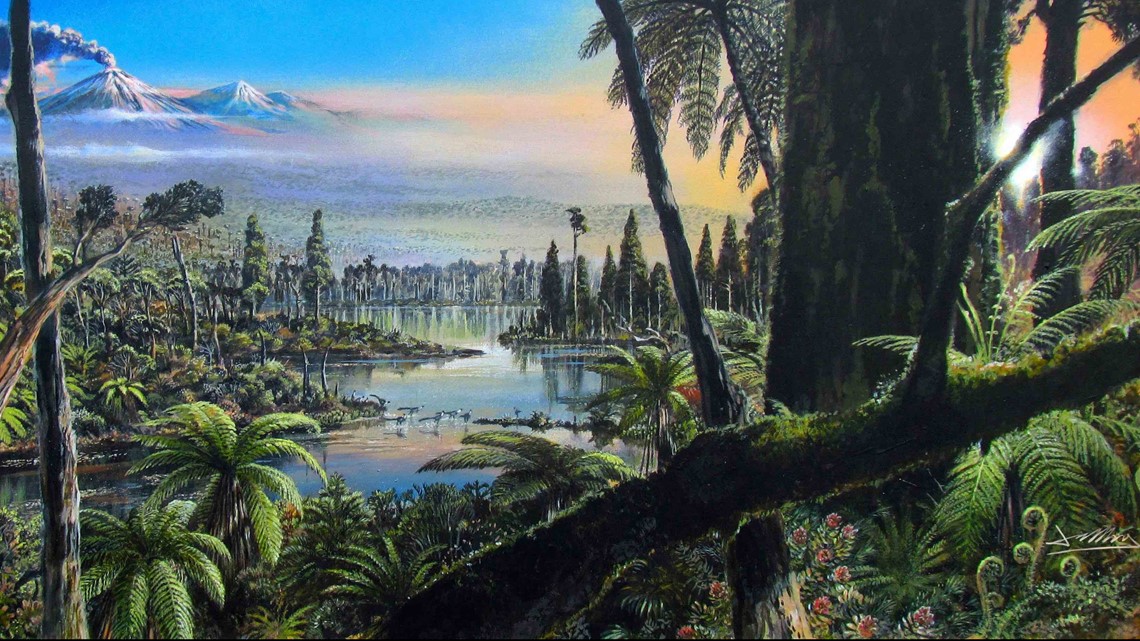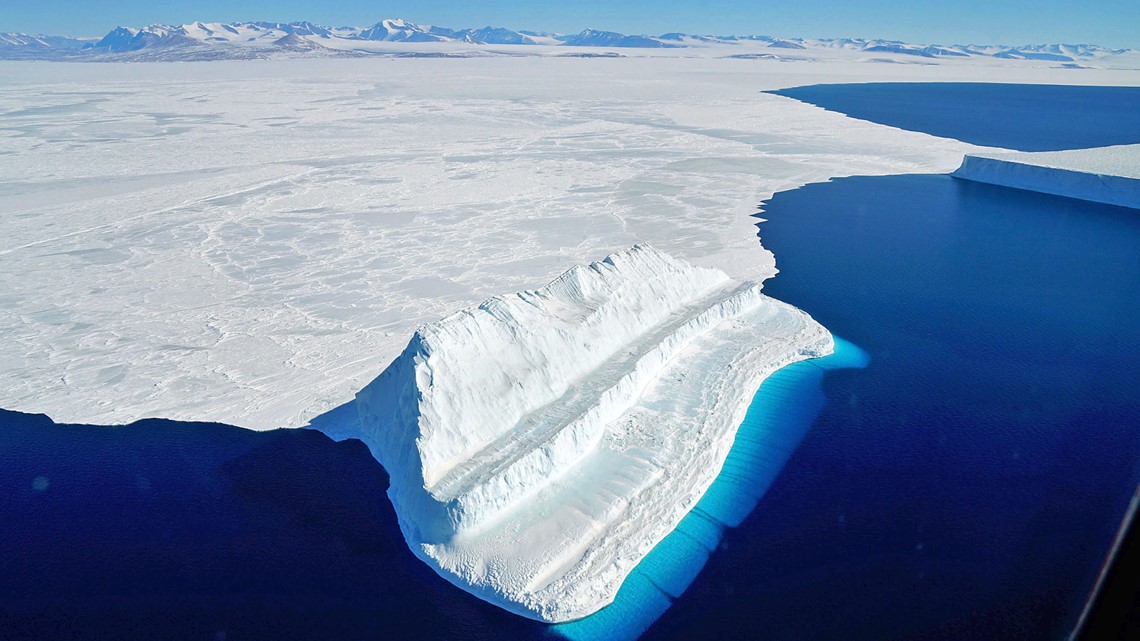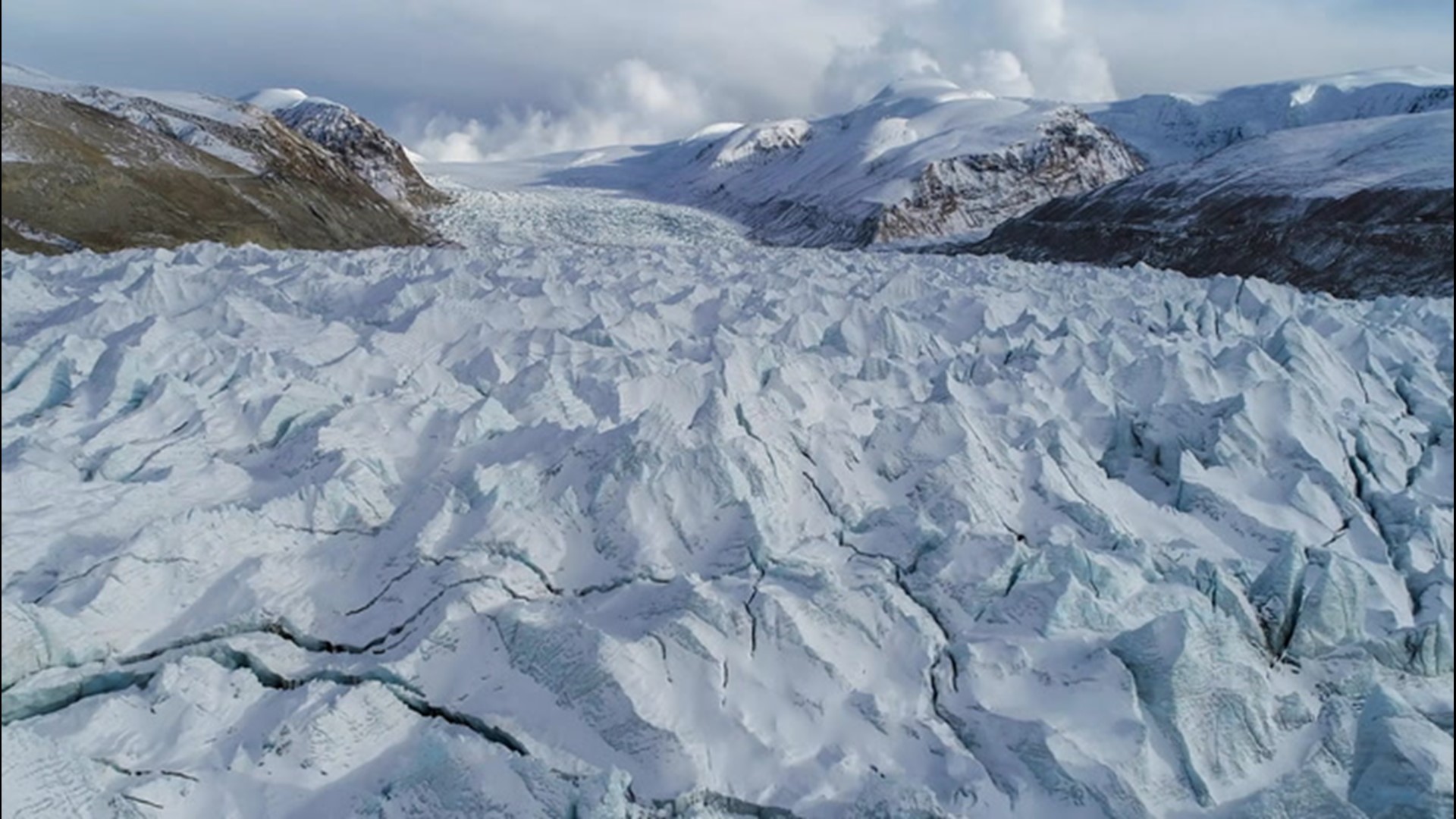Scientists say the Earth's South Pole wasn't always a frozen tundra of snow and ice.
A group of researchers discovered evidence that the harsh region of Antarctica was once home to a lush, swampy rainforest -- 90 million years ago.
The findings were published Wednesday in the journal Nature. They state the rainforest was around during the mid-Cretaceous period, the time of the dinosaurs and one of the warmest times on Earth during the past 140 million years.
The group came to these conclusions after discovering a well-preserved root network in a sediment core near Pine Island Glacier. In the sediment core collected in February 2017, the scientists found "almost originally preserved forest soil from the Cretaceous period, including many plant pollen and spores," a press release said.
And, the average yearly temperature for the area 90 million years ago was around 54 degrees Fahrenheit. Despite the region not getting sunlight for one-third of the year, scientists say it saw summer temperatures reaching 66 degrees and rivers and swamps getting up to 68 degrees.
Researchers say these conditions were possible because of the lack of major ice sheets we see now and the abundance of dense vegetation. The findings also state that carbon dioxide levels in the atmosphere and global temperatures were much higher than previously thought.
And, yes, there were probably dinosaurs in these Antarctic forests, Dr. Jane Francis said to BBC. Francis is the director of the British Antarctic Survey and an author of the Nature findings.
"If you go to the tip of the Antarctic Peninsula, you'll find a whole range of fossils -- things like hadrosaurs and sauropods, and primitive bird-like dinosaurs," she said. "The whole range of dinosaurs that lived in the rest of the world managed to get down to the Antarctica during the Cretaceous."




- What do I need to know when treating someone who is sick?
- CDC looks at changing guidelines to get asymptomatic people back to work
- Keep your 'safer at home' hair under control with these tips
- Hundreds of American, Southwest airlines employees test positive for COVID-19
- Coronavirus in your neighborhood: You can track Florida COVID-19 cases by zip code
- When will your federal stimulus check arrive?
- Hotlines, websites offer the latest on COVID-19
FREE 10NEWS APP:
►Stay In the Know! Sign up now for the Brightside Blend Newsletter



